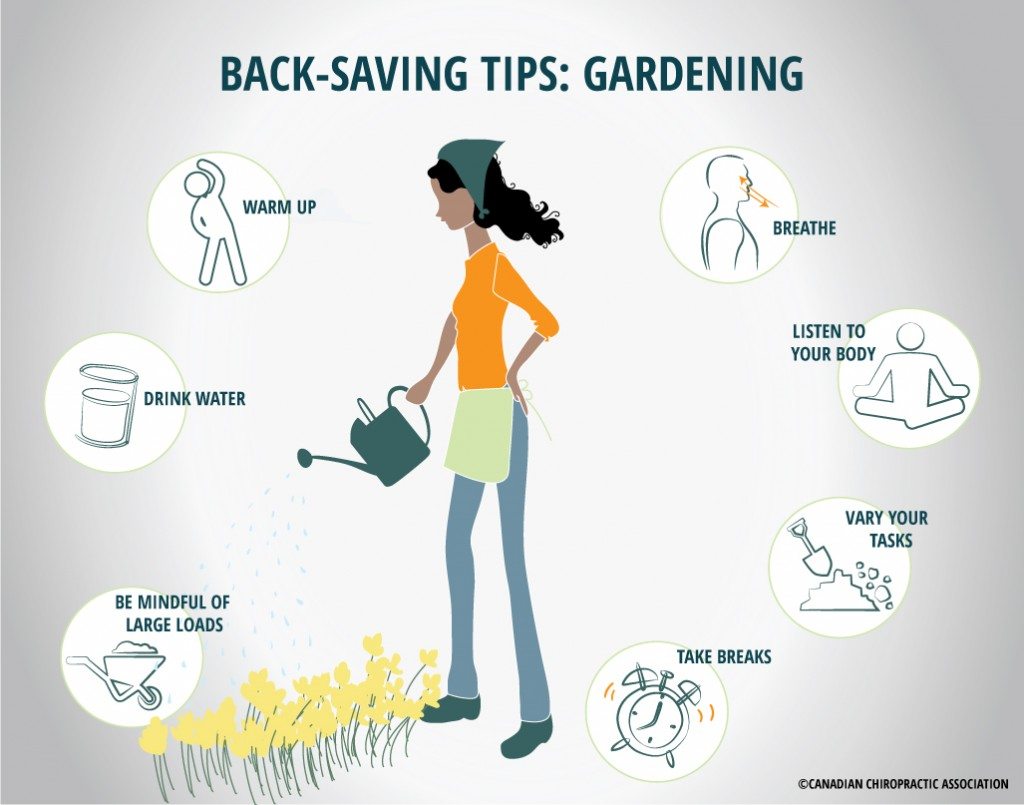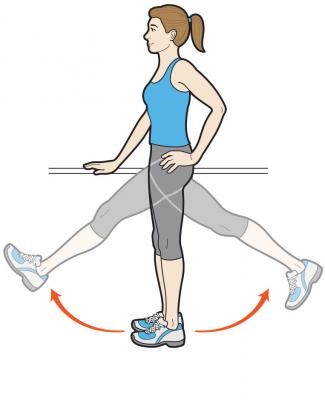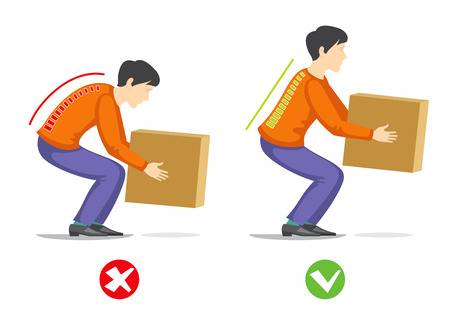5 tips to prevent back pain when gardening
As the weather warms up, it is so tempting to jump straight out into the garden and start lifting, twisting, bending, pulling and forgetting that your body may not be conditioned for this type of activity. This can really put your back, hips, knees, shoulders, elbows and wrists at risk of injury.
Too often after a weekend of relaxing and enjoying gardening, it leads to pain and stiffness for many people. This doesn’t mean you have to give it up, as it doesn’t have to be that way. You need to realise your limitations, and by following these helpful hints, you can minimise the pain and stiffness enabling you to exercise that green thumb of yours after all!
1. Warm up
Gardening is a real workout. Before beginning the gardening, always make sure you warm up your back, leg and arm muscles by stretching. Any muscle that is going to be stressed or strained through activity should be warmed up to prevent injury.
A couple of warm up stretches to get you started:-
- Lower back: Lie on your back and pull both of your knees into your chest. Hold this for 20 seconds and repeat 3 times.
- Leg Swings: Stand up straight close to a wall or holding onto a chair. From here with the leg on the opposite side to the hand holding onto the wall, swing the leg backward and forward like a pendulum. Continue this for about 20 seconds either side and repeat 3 times.
Even going for a brisk walk for 10 minutes is a great way to warm up and get the body moving first.
2. Lift and bend correctly
Lifting pots, plants and watering cans incorrectly can definitely lead to injury. When you bend to lift on object you should always begin with bending your knees, not your hips. You should lift the object using both hands and keep the object close to your body. The further away you hold the object that you are lifting, the more work your body needs to do to hold it. Remember to lift from the legs, rather than bending over through the back. Never twist when you are holding heavy objects.
When you are lifting, it is always best to take your time and halve the load. For example if you are using a watering can only half fill it to make it easier for you to manage.
Depending on how heavy the object is, and your condition- You may be better to have a second person assist you. This is always the smartest option for limiting the load on your body to prevent injury.
When working down close to the ground, it is safest to be on your knees, rather than bending over from the hips. This is one of the worst positions for causing injury to the back and hips. When kneeling, you can use cushioning under your knees or even a cushioned kneeler which has handles specifically to assist you in getting up from this position.
3. Be aware of your posture –
It is important to vary your posture every half hour. Being stuck in the same posture for long periods can lead to injury. So vary between standing and kneeling by alternating tasks is the best way to go.
To avoid twisting, always make sure that you are facing square on to the area of garden you are specifically working on. Moving in closely to the area you are working on rather than reaching out is another way to avoid injury and pain.
When working above head height, it is best to use a sturdy ladder to reach rather than lifting your arms above shoulder height. Constantly lifting above your shoulders can lead to shoulder impingement and/or other rotator cuff injuries of the shoulder.
Focus on having the elbows partially bent when digging or raking as this will help to prevent any injury to them. Keep the shovel or rake in front of you to minimise the amount of twisting. If you need to get to an area at the side of the body, turn your whole body to keep the shovel or rake in line with your body. When raking, pull the rake towards you and not off to the sides in order to reduce unnecessary twisting and straining through the lower back.
4. Posture breaks regularly and hydrate
Every 30 minutes it is ideal to take a small 5 minute posture break and have some water to keep hydrated, especially on a hot day. A posture break means that you stand up tall with your head back so the ears are above your shoulders and your eye are looking straight ahead. From here, you can do some gentle shoulder rolls to relax the neck and upper back. You can also lay on your back on the ground, and pull the knees into the chest holding this for 20 seconds and repeat 3 times. Finally do a 10 leg swings with either leg (see description above). This is great for stretching out the hamstrings which it is a surprise to most people how much they get affected when bending and gardening.
5. Chiropractic
Sometimes it doesn’t matter how much you stretch and warm up. If there are underlying issues in the spine and nervous system, you will eventually feel the effects of it.
Your Chiropractor is a musculoskeletal professional. If you are injured, in pain after gardening, or you are wanting to strengthen and prevent future injuries, Chiropractic care is for you!
Dr. Deanne Esposito (Chiropractor)
Global Chiropractic



